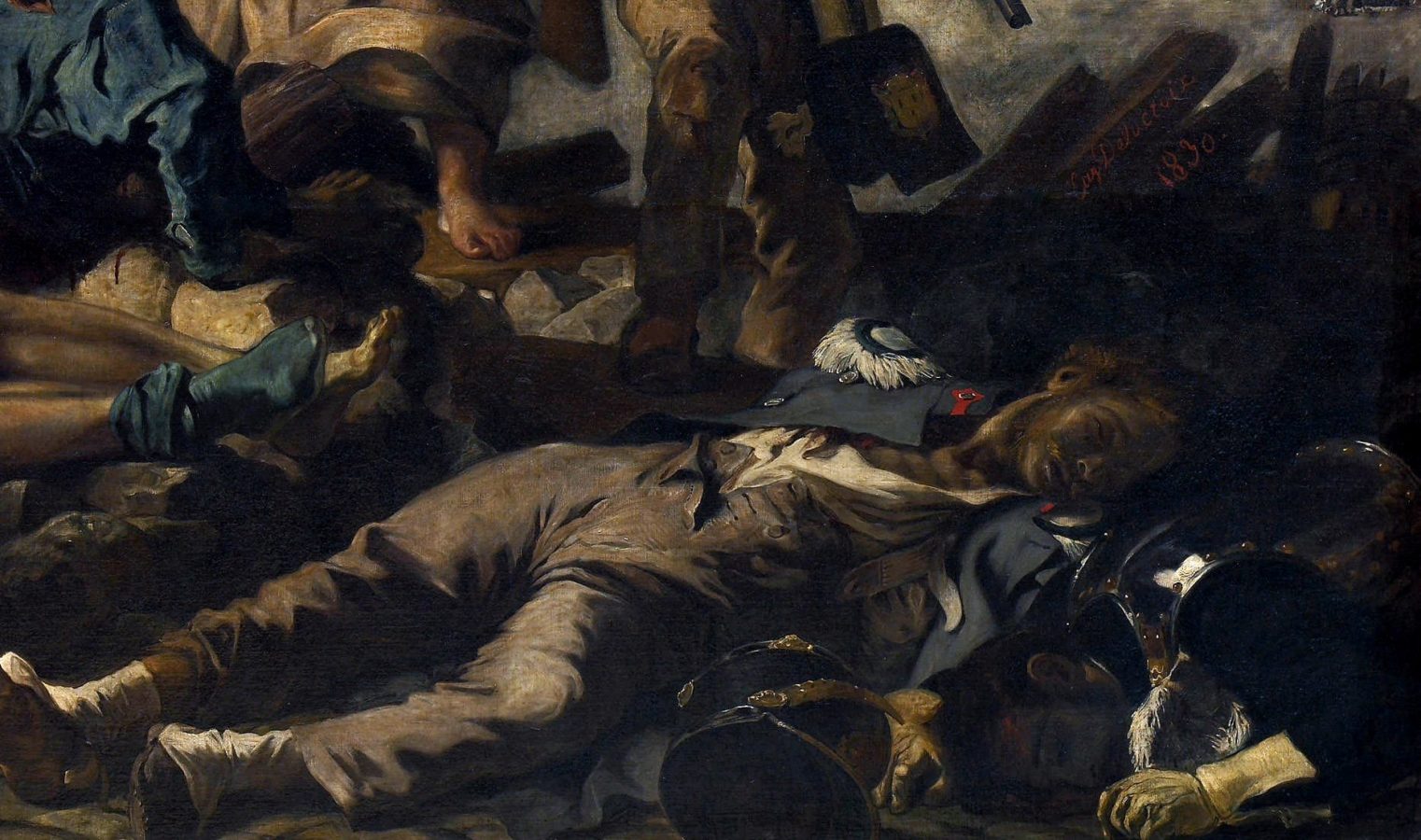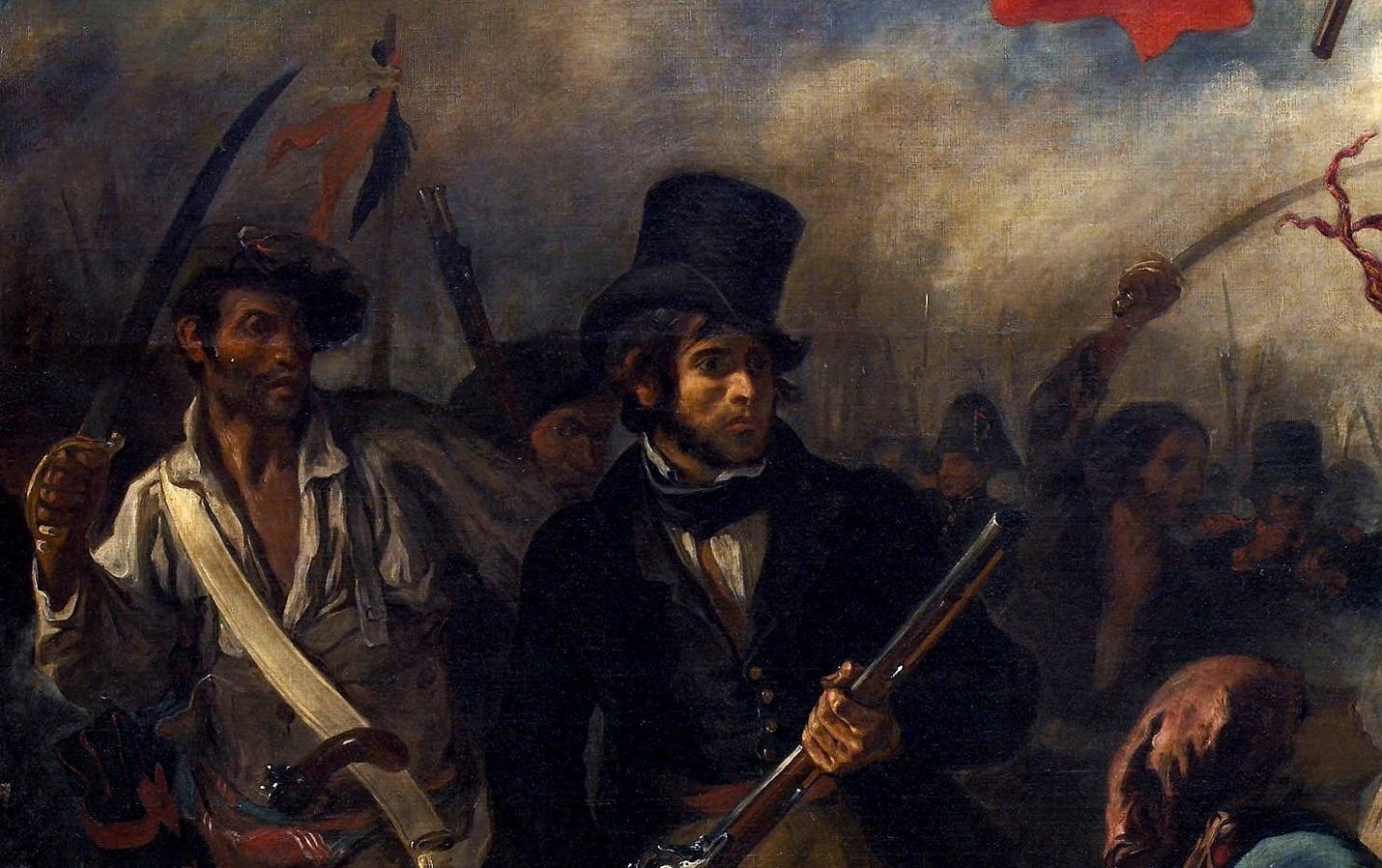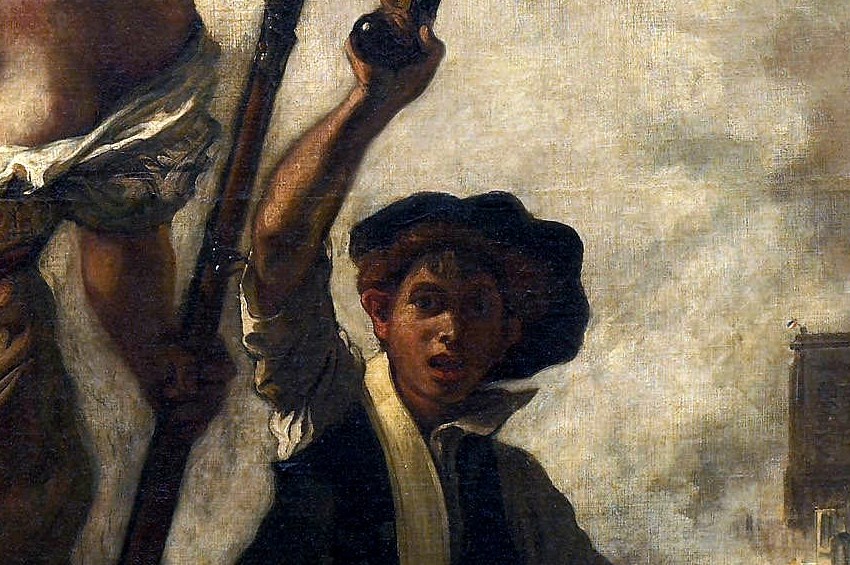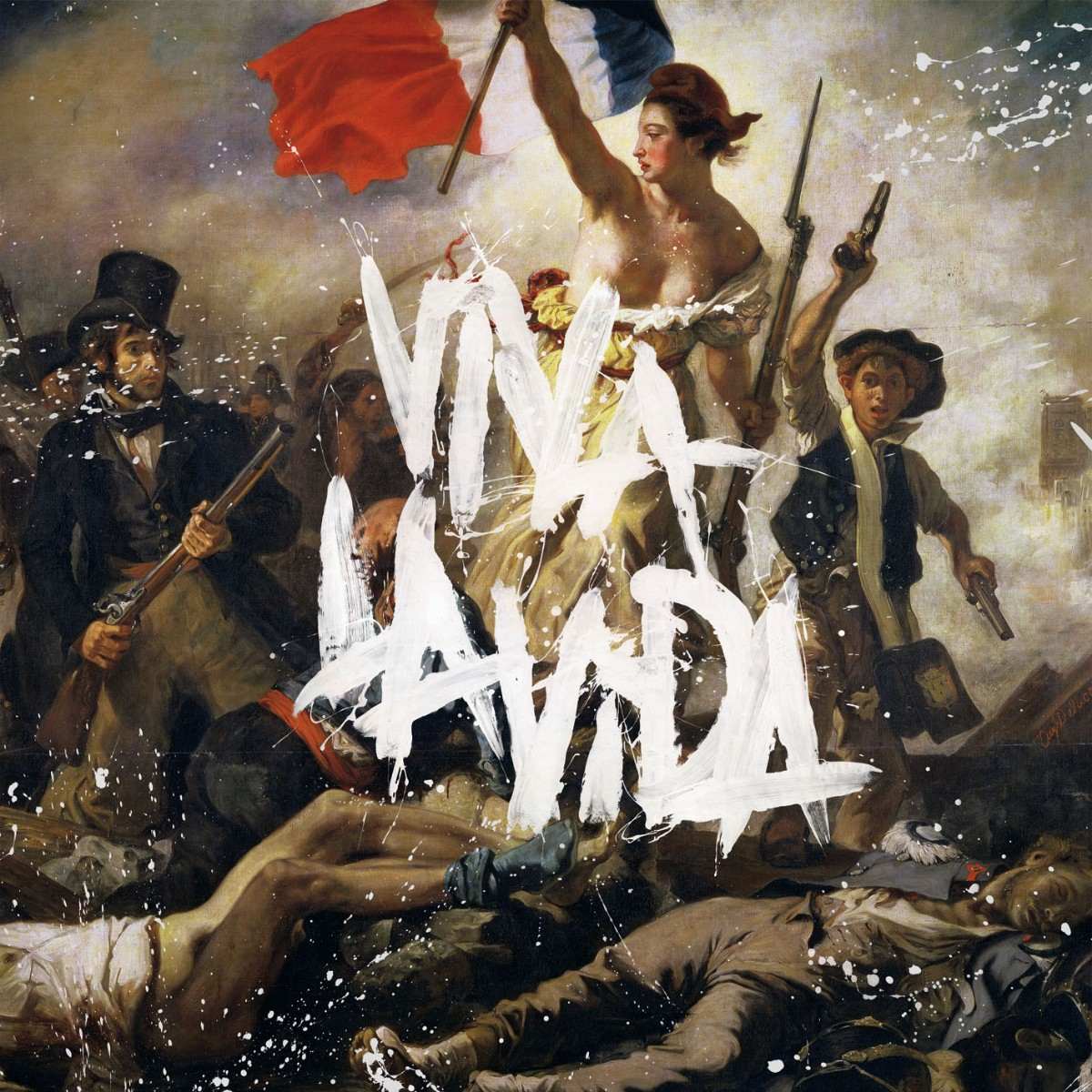Art From the Romantic Period Liberty Leading the People
I present to you a masterpiece past ane of the greatest artists of French Romanticism Eugène Delacroix, Freedom Leading the People, probably his best-known artwork. The painting, which has go an icon, has already served as inspiration for much, from banknotes to a encompass of a Coldplay album.

A Liberty Story
Freedom Leading the People is a painting usually associated with the July Revolution of 1830 in France. It is a large canvas showing a busty adult female in the center raising a flag and holding a bayonet. She is barefoot, and walks over the bodies of the defeated, guiding a crowd around her. This is probably the virtually famous artwork of Eugène Delacroix, who is known as the most important artist of Romanticism.
Eugène Delacroix was a master of colour and it is in Liberty Leading the People that he clearly expressed this. Carefully, Delacroix built a pulsating and dynamic scenario about an extremely current theme in his times. As he participated trivial in the fighting, he wrote: "If I can not fight for my country, I paint for it."

The painting is about freedom and revolution. First, because that is exactly what it portrays. In July 1830, France rose up confronting Rex Charles X, who was extremely unpopular for, amidst other things, being very bourgeois in political terms and trying to restore an old authorities that French people no longer wanted. In the artistic sense, the painting also represented a revolution – and more than that: freedom. In the fourth dimension of Delacroix, painters generally obeyed the rules of the Academy of Fine Arts which stressed the mastery of drawing, disegno. Delacroix, still, put more accent on the use of colour in an unobstructed manner.
A yr after its production, the painting was bought past the French Government and but was not on display for a long time. Currently, the artwork is role of the Louvre drove.
Freedom Characters
Okay, you lot already know that the woman in the center is Liberty. But what about the characters around her? Well, Delacroix had an illuminist germination and believed that ethics like freedom and fraternity were cardinal to building a better club. Considering of this, he portrayed several social strata in this painting. On the left, he shows a simple worker alongside a conservative intellectual (who would be the artist himself) and on the right side a boy, symbolizing the strength of youth.


The defeated enemies on the ground and the smoke give the air that the boxing is really coming to an end and that from then on freedom tin can take the citizens of France to a meliorate future.
Marianne, the Allegorical Muse
The title makes information technology obvious, the woman represented here is the ideal of freedom. But even as an allegorical figure, the woman is more than that: her name is Marianne, which is probably the upshot of joining together two very common names in France at the fourth dimension, Marie and Anne.
Curiously, 18 years after the July Revolution, Marie Anne Hubertine, a French activist who fought for the insertion of women in politics, was born. This is because, although the representation of freedom was feminine, women still couldn't vote or stand up for public part – although the female person figure was e'er called to represent virtually of the allegories…
Even today there are references fabricated to this painting: in Brazil where I live, the painting inspired the face on our currency, and it is found likewise in several other countries. Her face represents the republic.
And more: in 2008, the painting was chosen equally an album cover for Viva La Vida by music band Coldplay!

In add-on to the cover, the rock band too produced an alternative clip for the championship vocal where the atomic number 82 vocalist represents a king (perchance Charles X?) and he sings "I used to rule the world, I would ascension when I gave the word. Now in the morning I sleep alone, sweep the streets I used to own" while we see the picture of Delacroix all the fourth dimension. Information technology seems that the Romantic painting and the dream of the French creative person still tin can inspire us even today.
Source: https://www.dailyartmagazine.com/liberty-leading-the-people/